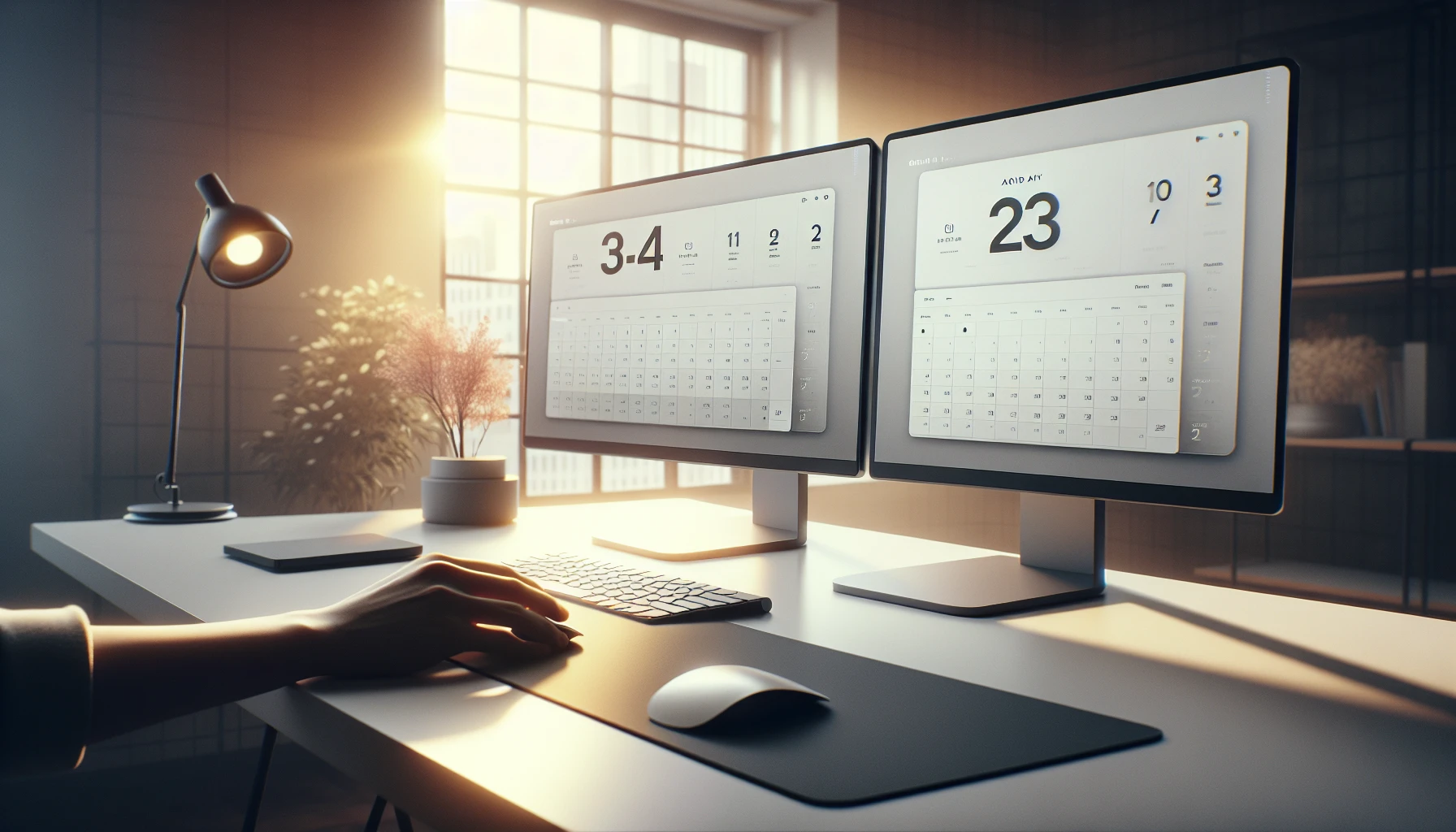· Ricardo Batista · 13 min read
Meeting reminder email templates - Cut No-Shows Fast
Looking at meeting reminder email templates that help cut no-shows and sync calendars with tools like FluentBooking, Booknetic, and Krisp AI

Meeting reminder email templates help people keep track of appointments and avoid chaos at work and life. They remind busy folks in personal services, eLearning, sales and recruitment. With scheduling tools that sync with calendars and integrate reminders and payment features, using email reminders becomes simple and effective to save time and cut down on no shows.
Key Takeaways
- Meeting reminders keep your schedule on track and help avoid missed appointments
- Email templates make following up fun and easy, avoiding clutter in your workflow
- Our system automatically pings attendees who arrive late to meetings, ensuring everyone stays informed
- Integration with top tools helps streamline and sync your calendar and notifications
- Simple, clear templates boost both communication and overall productivity
Meeting Reminder Email Templates for Modern Teams
Meeting reminder email templates help ensure that your meetings run smoothly by automatically pinging attendees who arrive late or forget to join altogether. These emails are vital for a wide variety of purposes, including personal services, eLearning sessions, sales pitches, marketing briefings, and recruitment discussions. When you use these templates, you cut down on no-shows and miscommunications. They also keep everyone on track, ultimately saving time and reducing disruptions.
For teams and professionals, crafting an email that conveys essential details quickly and clearly is key. With the right template, you can maintain a friendly tone while emphasizing the important details like meeting time, location, and agenda. Even if your team is less than perfectly punctual, using a reminder email template that automatically notifies late arrivals helps ensure the meeting starts on time.
Scheduling Tools to Enhance Meeting Reminders
Efficient scheduling tools do more than merely book appointments; they integrate directly with your reminder emails to minimize human error and streamline communication. Below are some top apps that have recently improved the scheduling game for modern teams.
FluentBooking 1.6.0
FluentBooking 1.6.0 is a new release that has upgraded features for automated emails and real-time notifications. Some standout characteristics include:
- Simple user interface that lets you design custom reminder emails.
- Real-time confirmation and follow-up messages to reduce no-shows.
- Automation that pings attendees who arrive late, keeping your meeting on schedule.
This tool is particularly beneficial for small businesses and freelancers who rely on punctuality to maintain their workflow. You can check out more details at FluentBooking.
Booknetic’s Comprehensive Scheduling Solutions
Booknetic offers a robust set of scheduling solutions designed for business operations that extend beyond just appointment setting. Key features include:
- Integration with a variety of calendar platforms to ensure all details are up-to-date.
- Automated reminders and notifications, meaning that your system gently pushes the meeting details to attendees.
- Customizable email templates that allow you to tailor messages to your brand voice, keeping the tone friendly yet professional.
These features help keep your emails simple and effective. Booknetic can be especially helpful if you manage a team with diverse meeting types and need to ensure every attendee gets the right reminder at the right time.
YouCanBookMe’s Customizable Booking Page Templates
YouCanBookMe is known for its clean design and focus on user experience. With its customizable booking page templates, you can:
- Design landing pages that include booking options integrated with your reminder emails.
- Use automation to confirm appointments and send subsequent reminders.
- Reduce administrative work by syncing with multiple calendar types and communication channels.
This tool is perfect for individuals or teams that prefer an intuitive interface and want to ensure all participants receive clear instructions about joining the meeting. The customizable aspect helps personalize the experience, adding a touch that might encourage attendance and reduce tardiness.
Best Practices for Crafting Effective Meeting Reminder Emails
Crafting an effective meeting reminder email is less about fancy language and more about clear, actionable information. Whether you’re sending them out manually or setting up automated systems, consider both the tone and the content structure.
Email Structure and Key Components
A well-crafted reminder email should have these elements clearly laid out:
- Subject Line: Keep it straightforward. For example, “Reminder: Your Upcoming Meeting at [Time]”.
- Greeting: Start on a friendly note. A simple “Hi [Name],” is enough.
- Meeting Details: List the date, time, and location or link for virtual meetings.
- Purpose/Agenda: Briefly state the meeting’s purpose so attendees know what to expect.
- Call to Action: Encourage an immediate response if there are any changes or if confirmation is needed.
- Additional Information: Include any extra details such as parking instructions, dial-in details, or links to documents.
Step-by-step, the process could look like this:
- Decide on the tone: Friendly but professional.
- Write a compelling yet brief subject line.
- Include the main meeting details early in the email.
- Insert a call to action so recipients know what to do next.
- Proofread to ensure that the information is clear and complete.
Examples and Inspiration
Looking at examples can spark ideas on how to make your meeting reminder emails more engaging. Consider these resources:
- Jessica Malnik’s 16 email templates offer a diverse range of styles and formats that cater to various industries. They are a great starting point if you want to see how different formats can work.
- Krisp’s AI Meeting Assistant shows how artificial intelligence can simplify the scheduling process while ensuring clear, concise communications when notifications are sent.
For further ideas and templates, you might want to explore our detailed guide on the Meeting Reminder Email Template page. This guide provides various scenarios and sample texts that you can modify to fit your requirements.
Tips for Crafting a Friendly Yet Assertive Message
It’s important to strike the right balance in tone—professional but not overly formal. Here are some bullet points to keep your message effective:
- Be Direct: Clearly state the meeting time and any instructions regarding joining the discussion.
- Keep it Short: Avoid lengthy paragraphs. Use bullet points for clarity.
- Use Active Language: Instead of saying “you might consider joining,” say “please join.”
- Insert a Personal Touch: If appropriate, a little personalization goes a long way in encouraging prompt attendance.
- Double Check Details: Ensure that all meeting details are accurate to avoid further delays or misunderstandings.
When your reminder email pings an attendee who is running late, it should do so in a way that is firm about the schedule without sounding punitive. The goal is to gently remind them that every minute matters, which is why clarity and brevity are crucial.
Integration Techniques for Streamlined Communication
To get the most out of your meeting reminder email templates, integrating them with other tools can boost both efficiency and engagement. Today’s productivity tools are highly interconnected, making it easier than ever to combine meeting reminders with calendars, CRM systems, and even payment tools.
Calendar and CRM Integrations
Most scheduling tools offer seamless integration with popular calendar apps such as Outlook Calendar and Google Calendar. Here’s how to integrate these systems into your reminder strategies:
- Sync Automatically: Configure your scheduling tool to automatically sync with your calendar. This ensures any changes in meeting time or location are updated in real time.
- Two-Way Communication: Use CRMs that allow for two-way data exchange. This way, if an attendee confirms or cancels their participation, the status updates automatically.
- Centralized Information: Keeping meeting data synchronized across calendar apps and CRMs prevents double bookings, ensuring that every team member works with the most recent information.
Integrate with Payment Tools and Meeting Platforms
For organizations that require payment confirmation or virtual meeting setups, pairing your reminder system with platforms like WooCommerce, Stripe, and Zoom can enhance your workflow:
- Zoom and Online Meetings: Many scheduling apps have built-in integrations with Zoom. Once a meeting is booked, a unique Zoom link is generated and included in the reminder email automatically.
- WooCommerce and Stripe: For services that involve paid bookings or appointments, integrating with WooCommerce along with payment processors like Stripe ensures that reminders are sent only after payment confirmation. This avoids confusion and helps keep your financial records clear.
- Automated Follow-ups: These integrations often support automated follow-ups, meaning any changes or cancellations trigger an update that goes out via email.
A step-by-step implementation might look like this:
- Set up your scheduling tool to sync with your calendar app.
- Connect your CRM to capture attendee responses in real time.
- Integrate with meeting platforms (like Zoom) to automate the creation and distribution of meeting links.
- For paid appointments, integrate with eCommerce platforms and payment gateways to send confirmation and reminders only upon successful transactions.
This integration not only minimizes manual data entry but also makes sure your meetings have the necessary support in place, especially considering that a gently worded reminder can automatically ping participants if they’re late or if any conflicts arise.
Additional External Resources for Enhanced Efficiency
When you’re diving into meeting reminder email templates and the overall scheduling process, there are a number of external resources available that can offer further guidance and inspiration, These websites provide comprehensive tools, creative strategies, and case studies that can help you refine your approach: These websites provide comprehensive tools, creative strategies, and case studies that can help you refine your approach:
- Explore more scheduling apps and discover additional features at FluentBooking.
- Check out Booknetic if you need robust app integrations and customizable scheduling options.
- Learn how to automate notifications and customize your booking pages at YouCanBookMe.
- For the latest on AI-powered meeting insights and automated email reminders, visit Krisp.
- If you’re interested in creative and engaging email marketing techniques, Sendoso offers innovative strategies that can add an extra spark to your communication efforts.
Each of these tools helps to minimize the risk of no-shows and ensures that detailed instructions and meeting links are delivered with minimal delay. The integration of intuitive tech with clear, consistent messaging can make a real difference, even when meeting attendees are known to be a bit late.
For more detailed internal guidelines on related topics, you may also want to take a look at our article on Meeting Minutes Templates. This resource provides similar step-by-step insights into organizing meeting takeaways and ensuring follow-up communications are handled efficiently.
Automatically Ping Late Attendees with Clear Instructions
One of the standout features of modern scheduling and reminder tools is the ability to automatically ping attendees who join the meeting late. This functionality is particularly useful in environments where every minute of a meeting is precious. Here’s how you can set up and manage these pings effectively:
Steps to Implement Late Arrival Notifications
- Review Settings: Check the settings of your chosen scheduling tool and enable late arrival notifications.
- Customize Timing: Decide on a time threshold for lateness. For instance, set an alert if someone is more than five minutes late.
- Draft a Friendly Reminder: Craft a succinct message that reminds the individual of the meeting without sounding harsh. For example: “We noticed you joined a bit late—please try to be on time so we can cover all the agenda items.”
- Test the System: Run a test meeting to ensure that the reminder email or notification triggers correctly.
- Monitor Responses: Keep an eye on the responses and adjust the timing or content as needed to match your team’s dynamics.
By following these steps, you can ensure that every participant receives a timely nudge, ultimately helping the meeting run more efficiently.
Benefits of Automated Pings
Automated pings not only reduce the need for manual follow-ups but also help maintain consistency in comparison to individual reminders. Some benefits include:
- Reduced No-Shows: Attendees are less likely to miss out completely if they receive an automated reminder shortly after a delay.
- Streamlined Communication: The meeting host does not have to individually track late arrivals, making the overall process smoother.
- Improved Engagement: Timely notifications keep meetings on track, which can improve overall participation and productivity.
This system of automatic follow-ups is especially helpful in fast-paced environments where every minute counts and where clear communication improves turnout and overall meeting quality.
Wrapping Up Integration and Strategy Insights
Planning, scheduling, and sending out effective meeting reminder emails require careful consideration of timing, integration, and tone. While the above strategies and tools focus on reducing tardiness and ensuring that every attendee is informed, they also highlight the benefits of keeping instructions clear, concise, and user-friendly.
- Remember to keep your subject lines direct and your messages short.
- Use bullet points and bold text to emphasize critical details.
- Rely on established tools like FluentBooking, Booknetic, and YouCanBookMe to automate your workflows, significantly reducing the chance of errors.
- Incorporate automated pings as part of your process to gently remind attendees who are running late, helping maintain the effectiveness and efficiency of your meetings.
By combining these tips with powerful integrations into your calendar, CRM, and payment systems, you can ensure that your meeting reminder emails remain a reliable tool for on-time attendance and improved team communication.
The combination of structured email templates, smart scheduling tools, and automated reminders can truly transform how your meetings are conducted. Whether you’re a small startup or part of a larger team, these approaches streamline communication and help everyone stay aligned and punctual.
Leveraging these techniques and exploring the external resources mentioned above can greatly enhance the overall meeting experience, ensuring that even the challenges of late attendance are managed gracefully.
Conclusion
To sum it up, this article highlighted how meeting reminder email templates make scheduling easier by reducing no-shows and keeping everyone on track. We looked at simple ways to sync calendars, integrate chat tools, and even ping attendees when they are running late. The key lessons are that using a straightforward meeting reminder can help you avoid unnecessary confusion, support smooth meeting transitions, and improve your overall planning process. We also explored some of the best tools and service providers that make it easy to set up these reminders, making tough tasks more manageable.
Even though the approach might seem a bit rough around the edges sometimes, the goal is clear: keep your meetings organized and efficient. If you’re looking for a service that specializes in automatically pinging the attendees that arrive late to your meetings, remember that our expertise is just a click away. Check out Meeting Reminders for more ways to boost your schedule and start your journey to smoother, more predictable appointments today.
Related Posts
Frequently Asked Questions (FAQs)
What are meeting reminder email templates?
Meeting reminder email templates are pre-written emails that help you remind everyone about upcoming meetings. They simplify scheduling and save you time by automatically sending out alerts to keep parties on track
How do meeting reminder email templates help reduce no-shows?
These templates send friendly prompts before the meeting, which cuts down on no-shows. Attendees get the details and reminders they need to be there. It takes a lot of the hassle out of following up later
How can I integrate meeting reminder email templates with tools like FluentBooking and Booknetic?
Integrating is simpler than it sounds - many tools like FluentBooking and Booknetic pair easily with your email system. Just link them up and set the timing for when reminders should go out
Can I customize my meeting reminder email templates for different types of appointments?
Yes, you can tailor each template based on the meeting type. Whether it’s for a casual catch-up or a formal meeting, you can tweak subjects and content to suit the style and timing of the appointment
How does your system automatically ping the attendees that arrive late to your meetings?
Our system has a neat feature that tracks meeting attendance in real time. If someone is late, it automatically pings them with a reminder to join. This way, even if delays occur, everyone’s kept in the loop and meetings flow smoother



